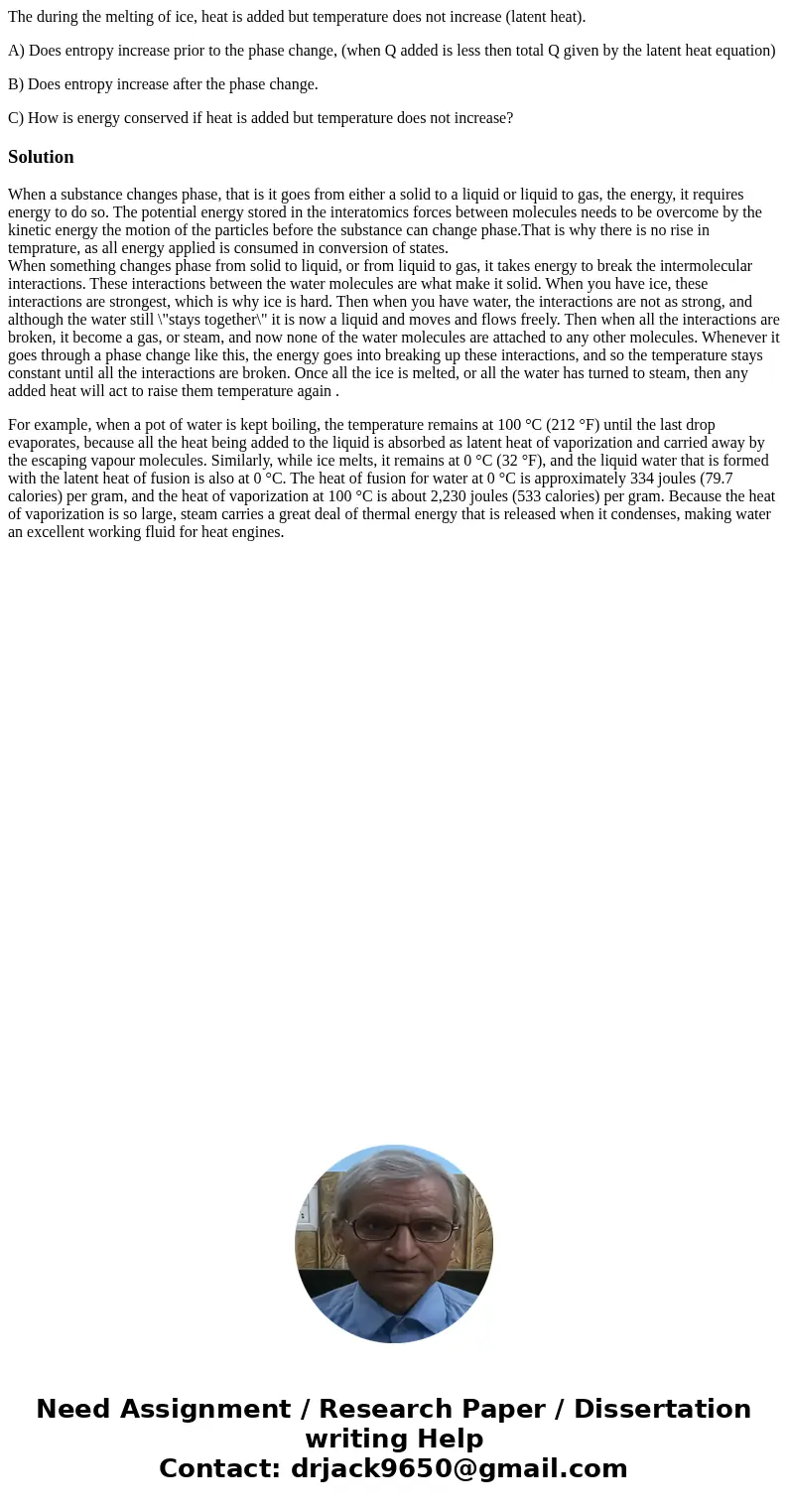The during the melting of ice heat is added but temperature
The during the melting of ice, heat is added but temperature does not increase (latent heat).
A) Does entropy increase prior to the phase change, (when Q added is less then total Q given by the latent heat equation)
B) Does entropy increase after the phase change.
C) How is energy conserved if heat is added but temperature does not increase?
Solution
When a substance changes phase, that is it goes from either a solid to a liquid or liquid to gas, the energy, it requires energy to do so. The potential energy stored in the interatomics forces between molecules needs to be overcome by the kinetic energy the motion of the particles before the substance can change phase.That is why there is no rise in temprature, as all energy applied is consumed in conversion of states.
When something changes phase from solid to liquid, or from liquid to gas, it takes energy to break the intermolecular interactions. These interactions between the water molecules are what make it solid. When you have ice, these interactions are strongest, which is why ice is hard. Then when you have water, the interactions are not as strong, and although the water still \"stays together\" it is now a liquid and moves and flows freely. Then when all the interactions are broken, it become a gas, or steam, and now none of the water molecules are attached to any other molecules. Whenever it goes through a phase change like this, the energy goes into breaking up these interactions, and so the temperature stays constant until all the interactions are broken. Once all the ice is melted, or all the water has turned to steam, then any added heat will act to raise them temperature again .
For example, when a pot of water is kept boiling, the temperature remains at 100 °C (212 °F) until the last drop evaporates, because all the heat being added to the liquid is absorbed as latent heat of vaporization and carried away by the escaping vapour molecules. Similarly, while ice melts, it remains at 0 °C (32 °F), and the liquid water that is formed with the latent heat of fusion is also at 0 °C. The heat of fusion for water at 0 °C is approximately 334 joules (79.7 calories) per gram, and the heat of vaporization at 100 °C is about 2,230 joules (533 calories) per gram. Because the heat of vaporization is so large, steam carries a great deal of thermal energy that is released when it condenses, making water an excellent working fluid for heat engines.

 Homework Sourse
Homework Sourse